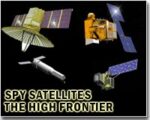The U.S. Marine Corps is adopting a U.S. Navy-developed unmanned aerial vehicle (UAV) training model to accelerate the integration of Group 3 drones into joint combat operations. This doctrinal shift aims to unify tactics, techniques, and procedures (TTPs) across naval and marine aviation units for improved interoperability in contested environments.
Aligning UAV Doctrine Across the Sea Services
In a bid to standardize unmanned systems employment across maritime forces, the Marine Corps is aligning its Group 3 drone training with the U.S. Navy’s established UAV syllabus. This approach stems from a recognition that both services increasingly rely on small-to-medium tactical drones for intelligence, surveillance, reconnaissance (ISR), targeting support, and electronic warfare in distributed maritime operations.
Group 3 UAVs—defined by the DoD as systems under 600 kg with operational ceilings below 5,500 meters—include platforms like the RQ-21A Blackjack and newer entrants such as the MQ-27A Sea Ferret. These systems bridge the gap between hand-launched quadcopters and larger Group 4/5 platforms like MQ-9 Reaper-class drones.
The Navy’s drone training model emphasizes modular payload use, expeditionary launch/recovery methods (including shipboard integration), and secure data link management in GPS-contested environments—capabilities increasingly relevant for Marine Littoral Regiments operating in Indo-Pacific scenarios.
Operational Drivers Behind Unified UAV Training
The doctrinal convergence is driven by several operational imperatives:
- Joint Force Integration: As part of Distributed Maritime Operations (DMO) and Expeditionary Advanced Base Operations (EABO), Marines must seamlessly share ISR feeds with naval task forces.
- C4ISR Interoperability: Unified TTPs ensure that data from USMC-operated drones can be ingested into Navy CEC (Cooperative Engagement Capability) or Link-16 networks without latency or format conflicts.
- Training Efficiency: Leveraging existing Navy curricula reduces duplication of effort while accelerating readiness timelines for new drone operators within USMC aviation units.
This shift also supports broader Department of Defense goals under Joint All-Domain Command and Control (JADC2), where cross-service sensor-to-shooter links must function fluidly regardless of platform origin.
Implications for Marine Corps Aviation Units
The adoption of naval drone doctrine will reshape how USMC aviation units train and certify their unmanned systems crews. Key changes include:
- Syllabus Standardization: Drone operator courses at locations like MCAS Yuma will now mirror those used by Navy squadrons such as VUP-19 or test units at NAS Patuxent River.
- Tactical Data Link Proficiency: Emphasis on Link-16 message formatting, waveform resilience under EW conditions, and multi-domain dissemination protocols.
- Shipboard Launch/Recovery Familiarity: Marines will train on ship-deck procedures using arrestor gear-compatible drones or net recovery systems common aboard LPD-class vessels or ESBs.
This alignment also facilitates cross-decking of personnel between sea services during deployments—a key enabler for flexible force packages envisioned in Force Design 2030 reforms.
Evolving Platforms: From RQ-21A to MQ-27A Integration
The doctrinal update coincides with a transition in USMC drone inventory. The legacy RQ-21A Blackjack—developed jointly with the Navy—is being phased out in favor of more capable platforms like the MQ-27A Sea Ferret or future VTOL-capable Group 3 systems currently under evaluation by NAVSEA and MARCORSYSCOM.
The MQ-27A offers extended range (>150 km), modular payload bays supporting EO/IR sensors or SIGINT packages, autonomous navigation modes including GPS-denied routing via terrain contour matching (TERCOM), and compatibility with both expeditionary launchers and shipboard catapults.
This hardware evolution underscores why harmonized training is essential—not only for operator proficiency but also for ensuring that advanced capabilities are fully leveraged in contested littoral zones such as Taiwan Strait contingencies or South China Sea patrols.
Toward a Unified Maritime Unmanned Ecosystem
The Marine Corps’ move reflects a broader trend toward service convergence in unmanned warfare domains. As both sea services invest heavily in autonomous ISR nodes—from surface vessels like MUSVs to aerial assets—the need for shared doctrine becomes critical for deconfliction and mission synergy.
Navy officials have previously highlighted the importance of “kill web” integration over traditional kill chains—where sensors from any node can cue effects from any shooter across domains. The adoption of common UAV TTPs by the Marines directly supports this vision by enabling seamless cueing between airborne sensors operated by different services but feeding into shared fire control loops via JADC2 architecture layers like Project Overmatch or CJADC2 interfaces.
Conclusion: A Milestone Toward Joint Unmanned Dominance
The U.S. Marine Corps’ adoption of naval drone training doctrine marks a significant step toward unified maritime unmanned operations. By synchronizing tactics around Group 3 UAV employment—including launch/recovery methods, data link protocols, payload deployment strategies—the services are better positioned to operate cohesively across distributed battlespaces where speed-of-data equals survivability.
This initiative not only enhances current readiness but lays groundwork for future manned-unmanned teaming concepts where interoperability begins not at deployment—but at training day one.









